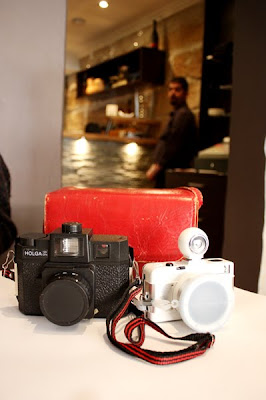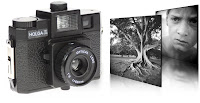 Nobuyoshi Araki is a well-known and controversial photographer who takes a fundamental role in Japanese Art extent. Someone thinks he is just a freak and voyeurism because most of his photography subjects are focus on something taboo or conventionally forbidden like naked women, their vaginas and boobs with extreme close up shoot and even sometimes bound Japanese women wear traditional kimonos or completely naked. Araki said the reality always exposure after being naked. However, he also gets a massive number of loyal cross-cultural fans like a very famous one, Iceland singer, Bjork.
Nobuyoshi Araki is a well-known and controversial photographer who takes a fundamental role in Japanese Art extent. Someone thinks he is just a freak and voyeurism because most of his photography subjects are focus on something taboo or conventionally forbidden like naked women, their vaginas and boobs with extreme close up shoot and even sometimes bound Japanese women wear traditional kimonos or completely naked. Araki said the reality always exposure after being naked. However, he also gets a massive number of loyal cross-cultural fans like a very famous one, Iceland singer, Bjork.
There are two specific photos of ‘sentimental journey’ that impressed me a lot. One is Yoko peacefully lied on a boat alone. She looks so relax but it somehow reminded me a sense of sadness. Especially I knew she already had cancer when Araki filmed. This is a kind of feeling about a husband watches beloved wife is dying but he has nothing to do but took the photo and it will remind himself everytime in the future. Espeically Araki used film camera to shoot this one which perfectly suited for the meaning of it, the best moment will never comeback again, you just could record it but can't change it.
The second one is very touching and I almost cried when I first saw it. This photo was also taken by Araki himself. Araki holds Yoko’s hand and she is already gone at that moment. This is the ending of Yoko's life, the ending of photographic conversation between Araki and Yoko, also the ending of 'sentimental journey'
"Maybe I only had a relationship with her as a photographer, not as a partner. If I hadn’t documented her death, both the description of my state of mind and my declaration of love would have been incomplete. I found consolation in unmasking lust and loss, by staging a bitter confrontation between symbols. After Yoko’s death, I didn’t want to photograph anything but life – honestly. Yet every time I pressed the button, I ended up close to death, because to photograph is to stop time. I want to tell you something, listen closely: photography is murder."
-------------------Araki
http://www.lensculture.com/oborn.html























































